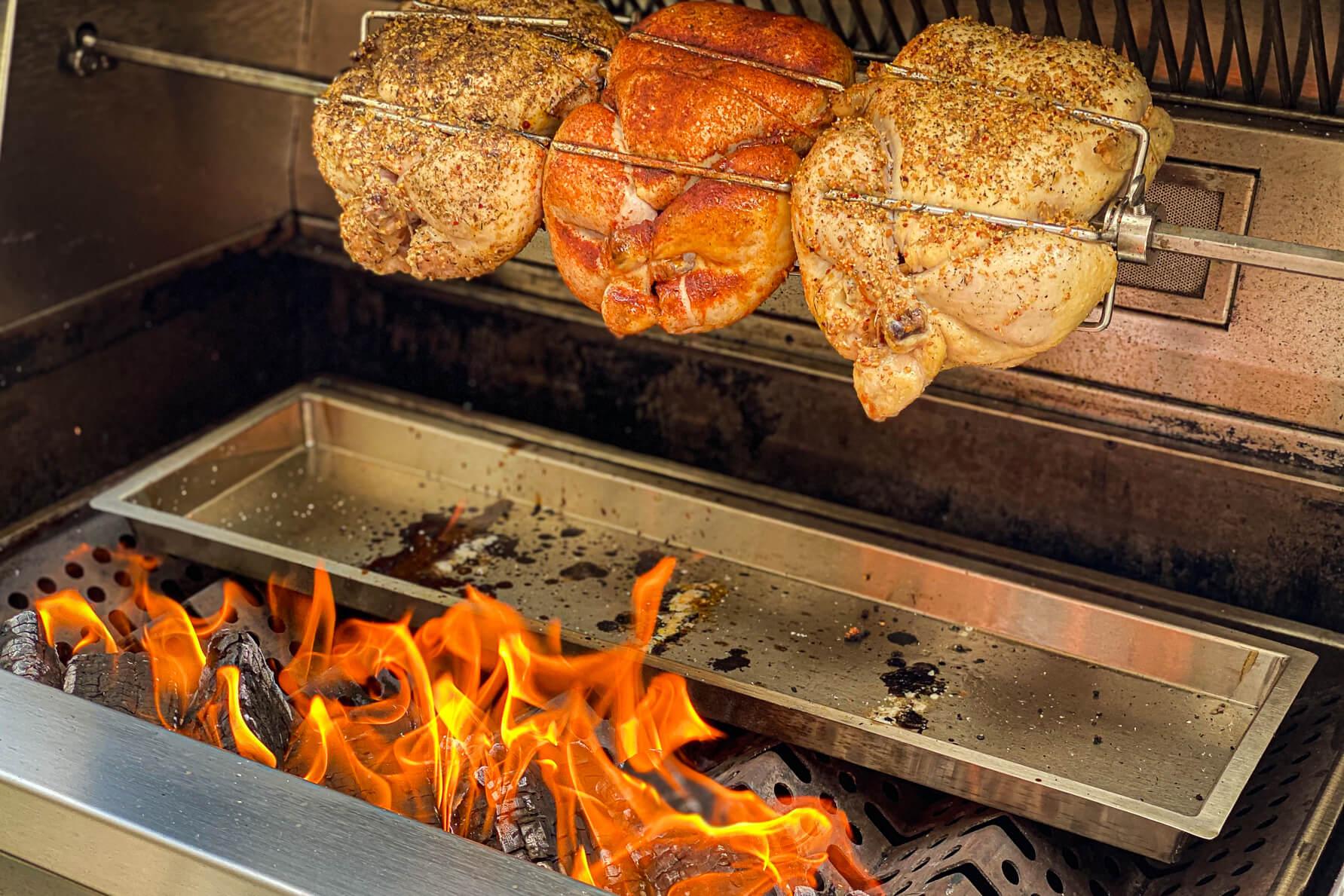
The vertical design of this oven enables different foods to cook at the same time without swapping flavors.

Not all rotisserie ovens rotate spits horizontally. Continuous rotisseries tend to be larger and can be real show-stoppers visually batch models offer more control and often faster cooking. As the names imply, one lets employees load product and unload it as it’s done the other cooks a batch of product all at once and employees unload it when the batch is done. In general, rotisseries come in two different types, continuous and batch. Many models have enough bells, whistles and digital brains to cook anything on your menu. The radiant heat browns the meat, poultry or other foods while the convection heat slow roasts it. (Though rotisseries can cook a wide range of products, they’re still used primarily for chickens, which is how most manufacturers rate capacity, rather than by weight.) Which model you choose depends on your volume, the products you want to cook and your concept.Īt their most simple, rotisserie ovens use a combination of radiant heat-whether from a gas infrared burner, electric quartz or metal element, or wood or gas flames-and convection heat. Models range in size from compact countertop units up to large floor models, and they can cook from about eight to 80 birds at a time. Situated front and center or in the back, the latest rotisserie ovens come in many sizes and styles to accommodate virtually any operation-from convenience stores to high-volume chains. But in some instances, operators prefer to place rotisseries out of sight in the back-of-house to block views of messy raw protein production. With their glass fronts, rotisseries put food on display and merchandise it as it cooks-even if customers are simply picking up a to-go order versus dining in. Rotisserie ovens can help present food as theater, serving as a warm, welcoming and well-lit stage for the stars of the show, from whole chickens to ribs, roasts, pork loin and even vegetables and pastries.


 0 kommentar(er)
0 kommentar(er)
